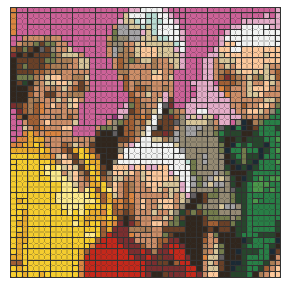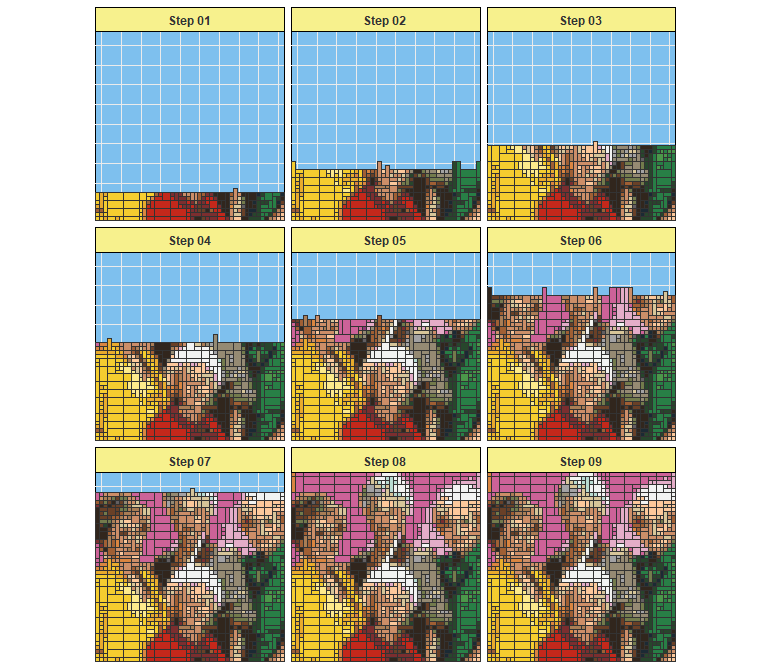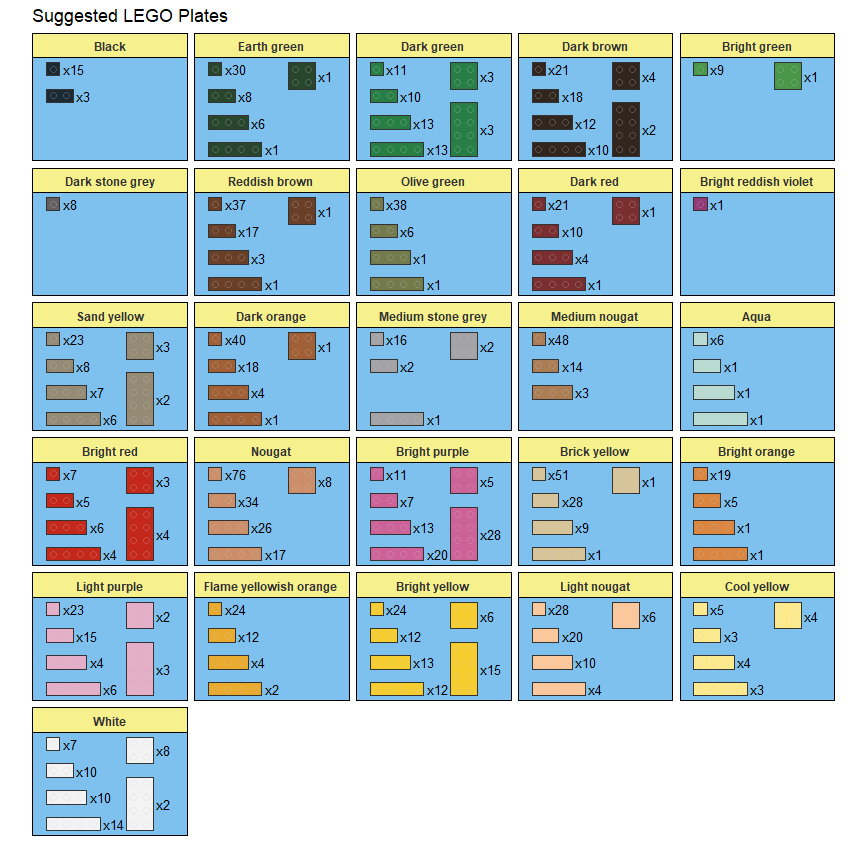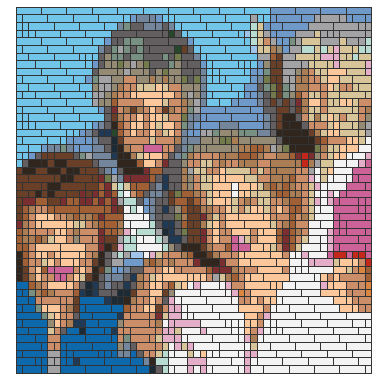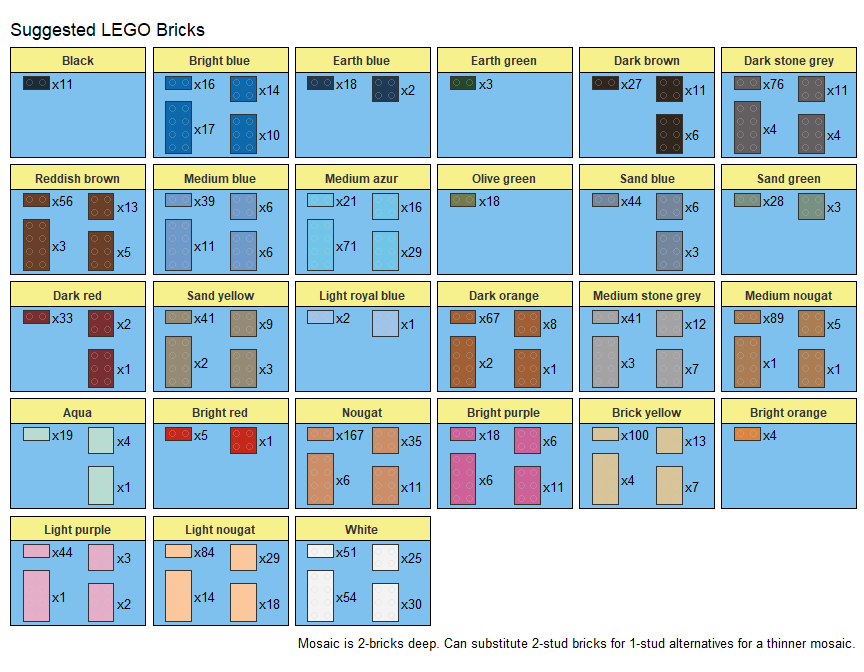The functions in the file 0_functions.R convert a jpg or png image into a mosaic of available LEGO colors and bricks using the R tidyverse and the jpeg or png packages.
A full explanation can be found on this blog post and this follow-up post.
This process is competed in a few distinct steps:
-
scale_image()reduces the image to a number of brick "pixels". Providing a single value, such as48, crops the image to a square. Inputting a 2-element array,c(56, 48), will output a rectangular image ofc(width, height). -
legoize()converts every brick-sized pixel in the scaled image to an official LEGO brick color. Those colors are stored inColors/Lego_Colors.csv. By default, the functions look at only currently produced, non-transparent colors. -
collect_bricks()looks for adjacent groups of the same color to replace single 1 x 1 bricks with larger bricks. -
display_set()renders the LEGO mosaic as a plot for viewing, creating the image above.
mosaic1 <- readJPEG("Images/goldengirls.jpg") %>%
scale_image(48) %>%
legoize() %>%
collect_bricks()
mosaic1 %>% display_set()Additional functions assist in the translation from the LEGO mosaic image into a real LEGO set.
Use generate_instructions() to break the LEGO mosaic image into easier-to-read steps for building the set. This defaults to 6 steps, but passing any integer value will generate that many steps.
mosaic1 %>% generate_instructions(9)Use display_pieces() to generate a graphic and count of all required plates or bricks (for stacked mosaics). These are sorted by color and size for easy purchase on LEGO.com's Pick-a-Brick section using the advanced search option. Alternatively, use table_pieces() to produce a data frame table of all required bricks.
mosaic1 %>% display_pieces()The default produces instructions for a flat LEGO mosaic, with all bricks placed "stud-up" on a plate. Alternatively, specifying mosaic_type = "stacked" in the collect_bricks() function will generate a mosaic where all bricks are stack on top of each other, resulting in the mosaic image being visible from the side.
A 1 x 1 LEGO brick is taller than it is wide by a ratio of 6/5, so it's recommended to use a wider image.
m2_lego <- readJPEG("Images/goldengirls2.jpg") %>%
scale_image(c(56, 48)) %>% #c(Width, Height) for rectangle
legoize() %>%
collect_bricks("stacked") mosaic2 %>% display_pieces()
